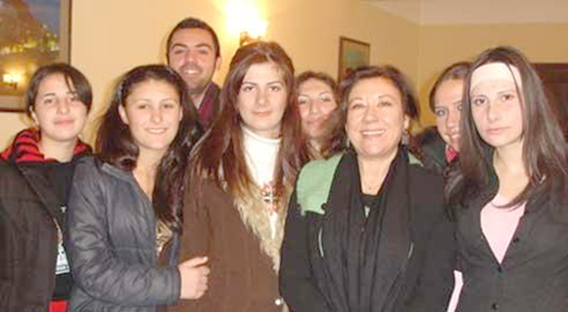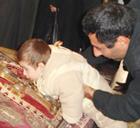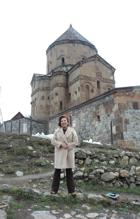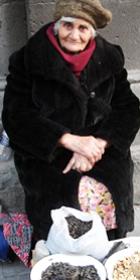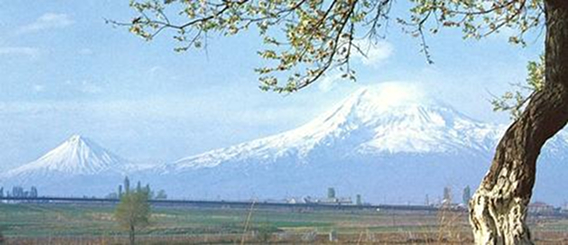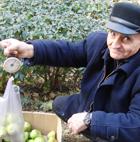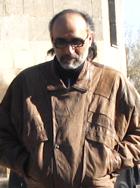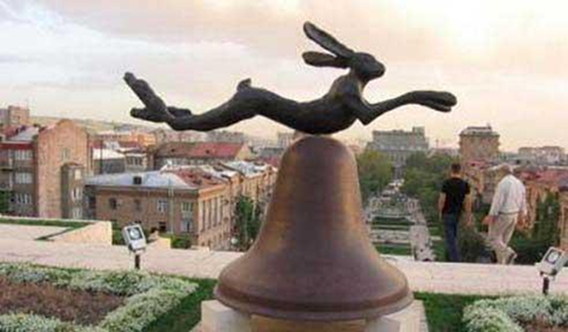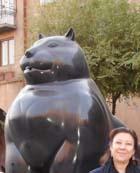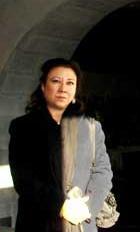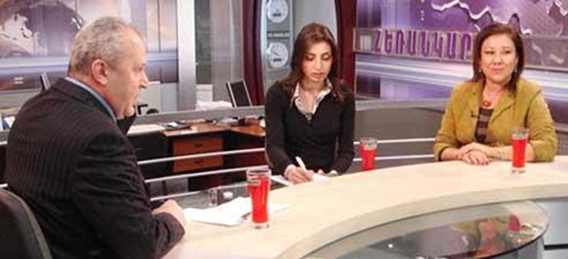On our last days in Yerevan, we had another appointment at Hracya Acharyan University. I was supposed to be meeting with journalism students in a workshop but there were many others from other faculties too. Another surprise was the presence of several students from Yerevan State University. They seem to be upset with the way their Rector Aram Simonyan cancelled an earlier meeting, as after that they were at almost every program I had scheduled.
When we discussed how the media covers things. I gave some examples from the Turkish media. Actually I'm critical on our own media, as I believe especially reporters should steer clear of stereotypes. I told them about the Armenian church recently being renovated at Akhtamar Island in Van. A professor told the students that even if the church is renovated there won't be any sign saying it was an Armenian church. Then I told them what I saw there with my own eyes. One student stood up and asked me:
"Our great-grandparents were all deported or massacred by Turks. All the students you see here can tell you this. So why don't you believe in the genocide yet?"
I tried to tell her that I understand their feelings.
"I believe that this was a great tragedy," I said, "but many people in Turkey believe the tragedy happened faced because of the unforeseen results of the deportation order. I'm not an expert on history, but I believe things should be openly discussed."
I give the example of last year's Armenian conference in Turkey, which was first cancelled but later with public pressure was moved to another venue. So I asked them what would be wrong if Turkish and Armenian historians got together and discussed the issues together, as Turkish Prime Minister Recep Tayyip Erdogan suggested. Would it be the end of the world?
Just then someone stood up and said: "Be correct." Then an argument started between that person and the program organizers.
"It was the dean of the international relations faculty who waned you to be correct," my translator told me. "Caucasus Center head Georgi Vanyan asked him, 'Why are you acting so rudely to a foreign guest? Is this the style of diplomacy you're teaching your international relations students?"
In fact it hadn't bothered me, but all those reactions told me how conditioned most Armenians are. We then left the meeting room, when the university rector offered us Ararat cognac, Armenian coffee and chocolates in his room. We tried to leave the controversy behind us.
OPEN BAZAAR
Yerevan is an interesting city with many different faces. One of them is the open bazaars, for example, and all the things they sell.
At one stand, you can see many leather products, jackets and so on. If you take a closer look you notice that most of these products are from Turkey, my Armenian Turkish friend Melisa told me.
"One day I really needed a jacket so I had to come here to shop," she said. "But the shopkeepers knew I wasn't Armenian, so they asked me: 'Where are you from?' When I told them I'm from Turkey, they all got mad and said to me, 'You must be crazy to buy things here. You see they're all from Turkey. Don't you see they're much more expensive?' "
Yes, the Turkish-Armenian border has been closed since 1993, since the Armenian invasion of Nagorno-Karabakh, and no Turkish government has wanted to open it without at least a partial Armenian withdrawal.
In other stands you can find all kinds of spare parts for just about anything you could need. Seeing all that variety I remembered the flea markets in Ankara when I was a girl.
ANDRANIK PASHA
We kept on wandering the streets of Yerevan and reached the heart of the city, right on Liberty Square in front of the National Gallery.
I saw a huge poster of Andranik Pasha (*) in front of the gallery and remembered how also during this visit, I was interviewed on TV for a half-hour and the anchor asked me about him.
It's clear that Andranik Pasha is a great hero in the eyes of every Armenian, but they seem they don't care much about Hovhannes Katchaznouni, their first prime minister, who in 1923 gave a speech blaming his own people and country for creating the conditions for deportation through insurrection and provocation.
Actually I was very surprised to get such attention from the Armenian media during my 10-day stay in Yerevan. Especially after the TV show, many times people stopped me on the streets and shared their views with me.
(*) Andranik Toros Ozanian was born in historic Shabin-Karahisar (80 miles northeast of Erzurum). He was destined to join the revolt against the Ottomans. At the age of 22, having lost his wife and two children, Andranik joined a partisan group formed in his hometown. Inspired by the group's ideas, Andranik went to Istanbul to meet those who had already been deeply involved in the movement. He readily accepted tasks assigned to him.
When Serob Aghbiur, the leader of a fighting group which Andranik had joined, was killed, Andranik was named leader. It was in 1901 when his fighting group held out in the Arakelots Vank against an overwhelmingly superior force that Andranik's name became famous for his effectiveness as a leader. There were many more similar occurrences to come. Andranik, at first, joined the Hunchak party; it was through party organization that he could be effective in securing men and materiel with which to carry on. But disagreement with party policies led Andranik to leave the Hunchak ranks and join the Dashnak party.
There too, when that party engaged in practices judged to be wrong in principle, Andranik resigned. During the period 1907-13, Andranik committed his energies to helping the Bulgarian revolt. In it he created an Armenian division, which brought distinction to itself by its effective participation. For his efforts Andranik was decorated and commissioned an officer. With World War I under way (1914-1918) Andranik went to the Caucasus and assisted in organizing Armenian battle units to fight the Turks alongside the Russian army units. In 1915 Andranik was named commander of all Armenian volunteer units within the Russian army.
NATIONAL ANTHEM
Wandering the Yerevan streets we passed by the Opera Building with a statue of famous Armenian composer Aram Khatchaturian out in front. In every restaurant and cafe we heard the popular songs from Armenian singers, and I liked them a lot, because they had many elements in common with Turkish folkloric music.
I was lucky enough to meet a young Armenian pianist-composer, Artur Avanesov, and asked him why Armenia was seeking a new national anthem. He told me that he doesn't like the current anthem's words and music, so he's glad that for the change. He says, the new anthem will be based on a Khatchaturian composition but the lyrics haven't been settled because there are a number of different alternatives.
The existing national anthem's lyrics seem to allude to the tragic past. I wonder: What will be the next one be like?
ARMENIAN NATIONAL ANTHEM
Our fatherland, free and independent,
That lived from century to century
His children are calling
Free independent Armenia.
Here brother, for you a flag,
That I made with my hands
Nights I didn't sleep,
With tears I washed it.
* * *
During our final hours in Yerevan, my last meeting was organized by the British Embassy in Yerevan. Listening to the British diplomat's words -- "Hatred doesn't help to create a new future, and both sides should at least be in contact" - I wondered how long we will stay apart like this. Can't we digest each other's existence? Shall we keep on endlessly living in our virtual realities?
But I had no answer, so I said "tstesootyun" (goodbye) to Yerevan.
Nursun Erel
Ankara - Yerevan - Ankara
December 13-16, 2006
The New Anatolian
